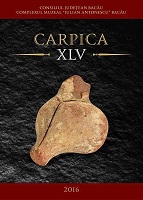Consideraţii asupra pârei la Înalta Poartă în veacul al XVII-lea
Information Regarding the „Denunciation” to the High Gate in the 17th Century
Author(s): Bogdan Florin RomandaşSubject(s): History of Law, Political history, 17th Century, The Ottoman Empire
Published by: Complexul Muzeal “Iulian Antonescu” Bacău
Keywords: Denunciation; Poland; The Ottoman Empire; The Sovereign Court; the political-legal system;
Summary/Abstract: At the end of the 17th century, during the tumultuous fights for the throne of the Romanian Countries, „denouncing” the ruler, especially the ex ruler, had become a political procedure, skillfully used by the boyar clans. „Denouncing” the ruler to the High Gate represented a commonly used practice during the Ottoman domination, but the history of this practice had been mentioned a long time before. In the Romanian Country, the „denunciation” is mentioned in March 28th 1412, and, three years later, this practice could be found in Moldavia, in a document written by Alexander the Good (1400–1432) in July 12th 1415. Under its various interpretations, to denounce also means to complain about, to sue to law, to go to law, and it had a leading part in the juridical process. By means of it, the dethronement of the ruler had become the responsibility of the Sovereign Court. To the old practice of changing the rulers by the boyars through bloody or military intrigues, the „denunciation” had been added to the High Gate, and this fact supposed high financial expenses from the persons who were involved. The „denunciation” represented the integration of the country in the political-legal system of the Ottoman Empire.
Journal: Carpica
- Issue Year: 2016
- Issue No: XLV
- Page Range: 61-86
- Page Count: 26
- Language: Romanian

